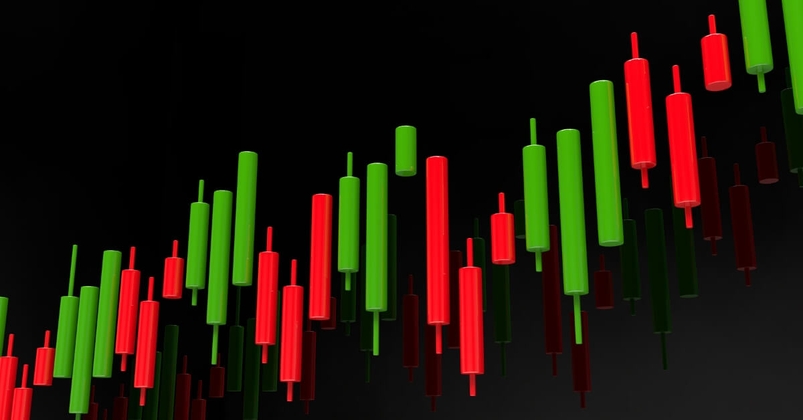- Français
- English
- Español
- Italiano
I was asked the other day how, in one sentence, I would describe what’s taken place in markets, and the economy more broadly, since then. Rather than a sentence, I used one word – “pandemonium”. There is a serious point here, though, as not only have the last few years had pretty much everything you could imagine, there are also plenty of learnings that one can take from the pandemonium that’s played out.
Now, clearly, we can’t go line-by-line though everything that’s happened over that time period. So much has taken place that my fingers would be ground to the bone typing it all out, and the note would run to the length of a PhD thesis. Nobody needs either of those.
The best place to turn to, then, is a chart. The S&P trading at 2,200, the VIX north of 80, 10-year yields pinned at 0.5%, and near-15% US unemployment all now feel like a long, long time ago.
_4y_sin_2024-02-27_15-14-30.jpg)
All this is, of course, very interesting, particularly for market historians. However, it is all very backward-looking. What is most important is to identify the key takeaways from the tumult of the last few years, and the lessons that one can learn, which can be applied to the present day.
Several spring to mind.
- Policy: Perhaps the most important takeaway is to never underestimate the ability of policymakers to provide necessary support as and when it is required. While the NIRP/ZIRP age may well now be behind us, with the upcoming easing cycle likely to see rates settle around neutral, central banks – and fiscal policymakers – have demonstrated on many occasions during this cycle (be it the start of the pandemic, the LDI gilts shenanigans, US regional banking issues, etc.) that they are willing, and able, to enter the market when required, in size if needed, to prevent contagion from emerging risks, and broader financial accidents. This, particularly with inflation now on its way back to the 2% target, presents an incredibly supportive backdrop for risk over the medium-term
- Liquidity: Following nicely from the above, is the idea that ‘liquidity trumps all’. In short, as liquidity is injected into the market, and works its way into the financial system more broadly, investors (on net) end up with too large a cash allocation and must, therefore, put some of that cash to work in the market, typically the equity space. Hence liquidity is a powerful force, not to be reckoned with, particularly when a positive liquidity impulse is combined with positive risk sentiment – exactly as we saw in Q2 20, and a combination that we have again seen over the last six months as the AI frenzy gathers steam, and policy looks to move to a less restrictive stance
- Inflation: The surge in prices seen in the aftermath of the pandemic is well-documented, and the days of double-digit inflation are ones which most will be seeking to forget. The extent to which intensifying price pressures was driven by policy, or driven by supply-side challenges, will be the subject of heated debate for years, if not decades, to come. Nevertheless, while policymakers were, in hindsight, far too slow to react to said price pressures, when hikes did begin, they begun in a sizeable and rapid fashion; G10 central bank heads the world over were determined to be remembered as Volcker Mk. II, not Burns Mk. II. Now that the battle against inflation seems to have been won, with disinflation progressing, albeit in bumpy fashion, the hard yards of the hiking cycle have yielded policymakers the reward of now being able to reduce the level of restriction being applied, thus engineering a ‘soft landing’
- RIP ‘Phillips Curve’: The theory that inflation and unemployment have a strong inverse relationship was already on shaky ground prior to the pandemic. Post-covid, it seems pretty definitively to be dead; particularly considering how inflation has receded over the last 18 months, despite global labour markets remaining tight, and growth remaining well above-trend. I doubt many need to see much more evidence of a flatter Philips Curve before proclaiming its death, particularly with inflation expectations having now anchored back at, or close to, target levels, though its demise will likely lead to an interesting policy mix in the longer-run, particularly for the FOMC attempting to achieve the ‘dual mandate’
- Stocks ≠ Economy: The rapid and vast recovery seen in global equities in the immediate aftermath of the pandemic again proved the adage that the ‘stock market is not the economy’. This was again evident, albeit in reverse, in 2022, when equities slumped despite blockbuster economic growth, owing to the most aggressive monetary policy tightening cycle in at least four decades. Naturally, the equity market operates as a forward-looking discounting machine meaning, at the risk of explaining the obvious, equity prices are a function of future earning expectations, not solely what is happening in the here and now. This is important to remember as, while a strong economy is typically a positive for broader corporate performance, it is not necessarily a prerequisite for the broader market to move to the upside
Related articles
Le matériel fourni ici n'a pas été préparé conformément aux exigences légales visant à promouvoir l'indépendance de la recherche en investissement et est donc considéré comme une communication marketing. Bien qu'il ne soit pas soumis à une interdiction de traiter avant la diffusion de la recherche en investissement, nous ne chercherons pas à tirer parti de cela avant de le fournir à nos clients. Pepperstone ne garantit pas que le matériel fourni ici est exact, actuel ou complet, et ne doit donc pas être utilisé comme tel. Les informations, qu'elles proviennent d'un tiers ou non, ne doivent pas être considérées comme une recommandation; ou une offre d'achat ou de vente; ou la sollicitation d'une offre d'achat ou de vente de toute sécurité, produit financier ou instrument; ou de participer à une stratégie de trading particulière. Cela ne tient pas compte de la situation financière des lecteurs ou de leurs objectifs d'investissement. Nous conseillons à tous les lecteurs de ce contenu de demander leur propre conseil. Sans l'approbation de Pepperstone, la reproduction ou la redistribution de ces informations n'est pas autorisée.




